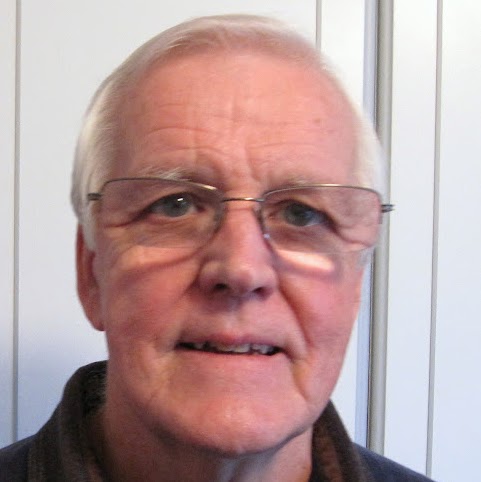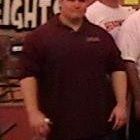Stuart Raymond Patrick
age ~63
from Bellevue, WA
- Also known as:
-
- Stuart Ray Patrick
- Stuart R Patrick
- Stuart R Tatrick
- Ray Patrick
- Patrick Ray Stuart
- Patrick S Ray
- Patrick R Stuart
- Sturat Tatrick
- Phone and address:
-
15404 53Rd St, Bellevue, WA 98006
4256039501
Stuart Patrick Phones & Addresses
- 15404 53Rd St, Bellevue, WA 98006 • 4256039501
- 15404 53Rd Pl, Bellevue, WA 98006 • 4256039501
- Issaquah, WA
- Logan, UT
- Jersey City, NJ
- 15975 84Th St, Redmond, WA 98052 • 4256039501 • 4258957555 • 4258988788
- Sammamish, WA
- Beavercreek, OH
- Allen, TX
- 23214 SE 29Th Ct, Issaquah, WA 98075
Work
-
Position:Construction and Extraction Occupations
Education
-
Degree:High school graduate or higher
Resumes

Stuart Patrick
view source
Stuart Patrick
view sourceWikipedia

Patrick Stewart
view sourceSir Patrick Hewes Stewart, OBE (born 13 July 1940) is an English film, television and stage actor, who has had a distinguished career in theatre and television ...
Us Patents
-
Method And Apparatus For Dynamically Changing The Color Depth Of Objects Displayed In A Computer System
view source -
US Patent:6377272, Apr 23, 2002
-
Filed:Apr 17, 1998
-
Appl. No.:09/062360
-
Inventors:Amit Chatterjee - Redmond WA
Stuart T. Laney - Seattle WA
Stuart Raymond Patrick - Issaquah WA -
Assignee:Microsoft Corporation - Redmond WA
-
International Classification:G09G 504
-
US Classification:345605, 345698, 345600, 345597
-
Abstract:In response to a change in the color depth of a computer systems display device, the invention dynamically changes the color depth of existing objects in system memory to match the changed color depth of the device. As a result open applications need not be shut down and then reopened to change the color depth of objects already in system memory. The dynamic changing is accomplished through a number of functions calls between an application, the operating system and a display driver. In one embodiment of the invention, copies with the changed color depth are made at one time of all objects in system memory and the original objects discarded. The copies are then transferred to screen memory (if the display device is a video display terminal) for display as they are requested. In another embodiment of the invention, copies with the changed color depth are made selectively as the objects are transferred to the screen memory. The copies are then discarded from system memory after transfer and the original objects retained.
-
Method And Apparatus For Creating And Performing Graphics Operation On Device-Independent Bitmaps
view source -
US Patent:6525743, Feb 25, 2003
-
Filed:Feb 25, 1998
-
Appl. No.:09/031316
-
Inventors:Stuart Raymond Patrick - Issaquah WA
Amit Chatterjee - Redmond WA -
Assignee:Microsoft Corporation - Redmond WA
-
International Classification:G06T 1100
-
US Classification:345619
-
Abstract:Operating system enhancements that enable an application program to create and perform graphics operations on device-independent bitmaps (DIBs) efficiently. The enhancements are in the form of functions that return to the application program a handle to the DIB and a pointer to the location of the DIB in memory. With the handle, the application program can use the capabilities of the operating system to perform graphics operations on the DIB. With the pointer, the application program can use its own drawing capabilities and address the DIB directly. The operating system enhancements also streamline the design and content of graphics drivers such as display drivers by placing basic graphics functions in a graphics engine that communicates with the a graphics driver. Simple graphics operations are passed from the graphics driver to the graphics engine, allowing the driver to be limited to more complex operations that utilize special characteristics of graphics hardware associated with the driver.
-
Method And Apparatus For Creating And Performing Graphics Operations On Device-Independent Bitmaps
view source -
US Patent:6683618, Jan 27, 2004
-
Filed:Dec 13, 1994
-
Appl. No.:08/355406
-
Inventors:Stuart Raymond Patrick - Issaquah WA
Amit Chatterjee - Redmond WA -
Assignee:Microsoft Corporation - Redmond WA
-
International Classification:G06T 1100
-
US Classification:345619
-
Abstract:Operating system enhancements that enable an application program to create and perform graphics operations on device-independent bitmaps (DIBs) efficiently. The enhancements are in the form of functions that return to the application program a handle to the DIB and a pointer to the location of the DIB in memory. With the handle, the application program can use the capabilities of the operating system to perform graphics operations on the DIB. With the pointer, the application program can use its own drawing capabilities and address the DIB directly. The operating system enhancements also streamline the design and content of graphics drivers such as display drivers by placing basic graphics functions in a graphics engine that communicates with the graphics driver. Simple graphics operations are passed from the graphics driver to the graphics engine, allowing the driver to be limited to more complex operations that utilize special characteristics of graphics hardware associated with the driver.
-
High Performance Counter For Realistic Measurement Of Computer System Load
view source -
US Patent:7421592, Sep 2, 2008
-
Filed:Feb 13, 2004
-
Appl. No.:10/779299
-
Inventors:Andrew Kadatch - Redmond WA, US
James E. Walsh - Woodinville WA, US
Stuart R. Patrick - Bellevue WA, US
Xiaowen Shan - Kirkland WA, US -
Assignee:Microsoft Corporation - Redmond WA
-
International Classification:G06F 1/00
-
US Classification:713300, 707 10
-
Abstract:The present invention leverages high-frequency interrupts and/or low priority threads to accurately determine which computing resources are available. This provides a computing asset (CPUs and/or software applications) with a means to accurately compensate for resource utilization in order to increase its performance. By utilizing the present invention, the computing asset can optimize its performance in a real-time, self-tuning manner. In one instance of the present invention, high intensity, low priority threads are initiated on available CPUs (logical and/or physical) to effectively replace a CPU's idle time with the low priority thread. This thread generally constitutes a computationally-intensive and/or a memory-intensive thread which permits a highly accurate performance measurement to be obtained for available CPU resources. In another instance of the present invention, high-frequency interrupts are initiated on CPUs to compensate for processes that are shorter than a thread's time quantum, providing a more accurate performance counter.
-
Protocol For Communication With A User-Mode Device Driver
view source -
US Patent:7603484, Oct 13, 2009
-
Filed:Apr 21, 2005
-
Appl. No.:11/111413
-
Inventors:Chung Lang Dai - Redmond WA, US
Mukund Sankaranarayan - Sammamish WA, US
Stuart R. Patrick - Bellevue WA, US -
Assignee:Microsoft Corporation - Redmond WA
-
International Classification:G06F 3/00
G06F 9/44
G06F 9/46
G06F 13/00 -
US Classification:710 5, 719327
-
Abstract:A user-mode device driver architecture is provided by the subject invention. The architecture includes a reflector, a driver manager and a host process which hosts and isolates one or more user-mode device driver(s). The user-mode device driver runs in the user-mode (UM) environment and has access to various UM services. The reflector resides in “kernel memory” (e. g. , memory/resource(s) available to operating system) while the driver manager, host process and user mode device driver(s) are located in user space (e. g. , memory/resource(s) available to user application(s)). The reflector provides a secure, stable communication path for application(s), the host process and/or user-mode device driver(s) to communicate with the operating system.
-
Adaptable Accelerated Content Streaming
view source -
US Patent:7650421, Jan 19, 2010
-
Filed:Dec 30, 2002
-
Appl. No.:10/331817
-
Inventors:Stuart Raymond Patrick - Bellevue WA, US
James E. Walsh - Woodinville WA, US -
Assignee:Microsoft Corporation - Redmond WA
-
International Classification:G06F 15/16
-
US Classification:709231, 709223, 709232
-
Abstract:Adaptable accelerated content streaming allows data to be streamed from a server to a client over a network at an accelerated rate for an amount of time before reducing the rate. In accordance with one aspect, the accelerated rate is prohibited from exceeding a threshold amount, which is based at least in part on both a total bandwidth of the server and an amount of bandwidth currently being used by the server. In accordance with one aspect, the data can be streamed to the client at up to an adaptable accelerated rate.
-
Isolation Of User-Mode Device Drivers
view source -
US Patent:20060242270, Oct 26, 2006
-
Filed:Apr 21, 2005
-
Appl. No.:11/111016
-
Inventors:Mukund Sankaranarayan - Sammamish WA, US
Chung Dai - Redmond WA, US
Stuart Patrick - Bellevue WA, US -
Assignee:Microsoft Corporation - Redmond WA
-
International Classification:G06F 15/177
-
US Classification:709220000
-
Abstract:A host process for use in a user-mode device driver architecture is provided by the subject invention. The architecture includes a reflector, a driver manager and the host process which hosts and isolates one or more user-mode device driver(s). The user-mode device driver runs in the user-mode (UM) environment and has access to various UM services. The reflector resides in “kernel memory” (e.g., memory/resource(s) available to operating system) while the driver manager, host process and user mode device driver(s) are located in user space (e.g., memory/resource(s) available to user application(s)). The host process can include a host runtime component and a framework component. The host runtime component is responsible for building a driver stack object, and, locating/loading object(s) of a framework component. The host runtime component further includes a message handler that facilitates communication with the reflector and routes information to components of the host process.
-
Command Remoting
view source -
US Patent:20100141678, Jun 10, 2010
-
Filed:Dec 8, 2008
-
Appl. No.:12/330295
-
Inventors:Nadim Y. Abdo - Bellevue WA, US
Asael Dror - Palo Alto CA, US
Max Alan McMullen - Redmond WA, US
Stuart Ray Patrick - Bellevue WA, US -
Assignee:Microsoft Corporation - Redmond WA
-
International Classification:G09G 5/00
-
US Classification:345619
-
Abstract:Various techniques for remoting graphics are described in the claims, drawings, and text forming a part of the present disclosure.
Name / Title
Company / Classification
Phones & Addresses
President, Chief Executive Officer
Patrick Baird & Co Inc
Security Broker/Dealer
Security Broker/Dealer
305 Plz 10, Jersey City, NJ 07311
2016807300
2016807300
Chief Executive Officer
Patrick Baird
Security Broker/Dealer
Security Broker/Dealer
20 Exchange Pl, New York, NY 10005
Myspace

Stuart patrick Mclaney
view sourceLocality:
fayetteville, North Carolina
Gender:
Male
Birthday:
1942
Plaxo

Stuart Patrick Young
view sourceCo.Wexford, IrelandDirector at Orioko Developments Ltd

Stuart Patrick
view sourceGoogleplus

Stuart Patrick
Work:
Regency Recruitment Ltd. - Systems Administrator (2004)

Stuart Patrick

Stuart Patrick

Stuart Patrick

Stuart Patrick

Stuart Patrick

Stuart Patrick

Stuart Patrick
Classmates

Patrick Stuart, Hopkins H...
view source
Stuart Patrick
view source
Stuart Patrick
view source
Stuart Patrick
view source
Stuart Patrick
view source
Kathy Stuart Patrick
view source
Stuart Patrick
view source
Stuart Patrick
view source
Patrick Stuart
view sourceFlickr
Youtube
News

Currency union 'the best route'
view source- Mr Perry, Sir Brian Stewart, former chairman of Standard Life, Professor Ronald MacDonald and Professor Adam Tomkins from Glasgow University, and Stuart Patrick, chief executive of Glasgow Chamber of Commerce, are all due to take part in a roundtable event focusing on currency organised by the pro
- Date: Aug 18, 2014
- Category: World
- Source: Google
Get Report for Stuart Raymond Patrick from Bellevue, WA, age ~63























